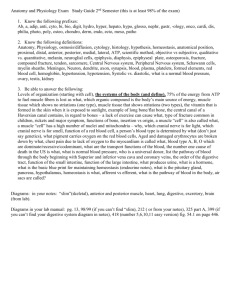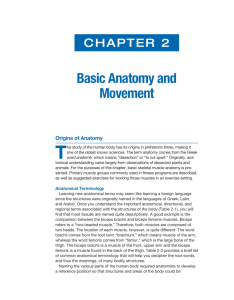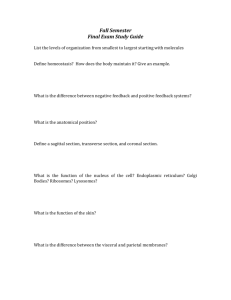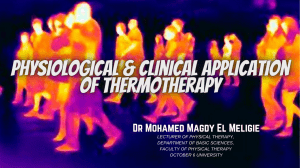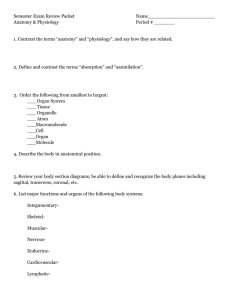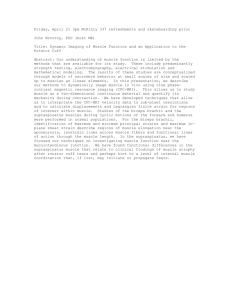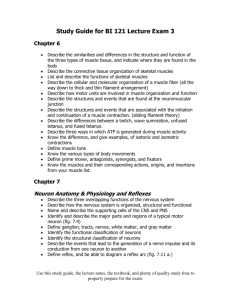Anatomy & Physiology January 2010 Semester
advertisement
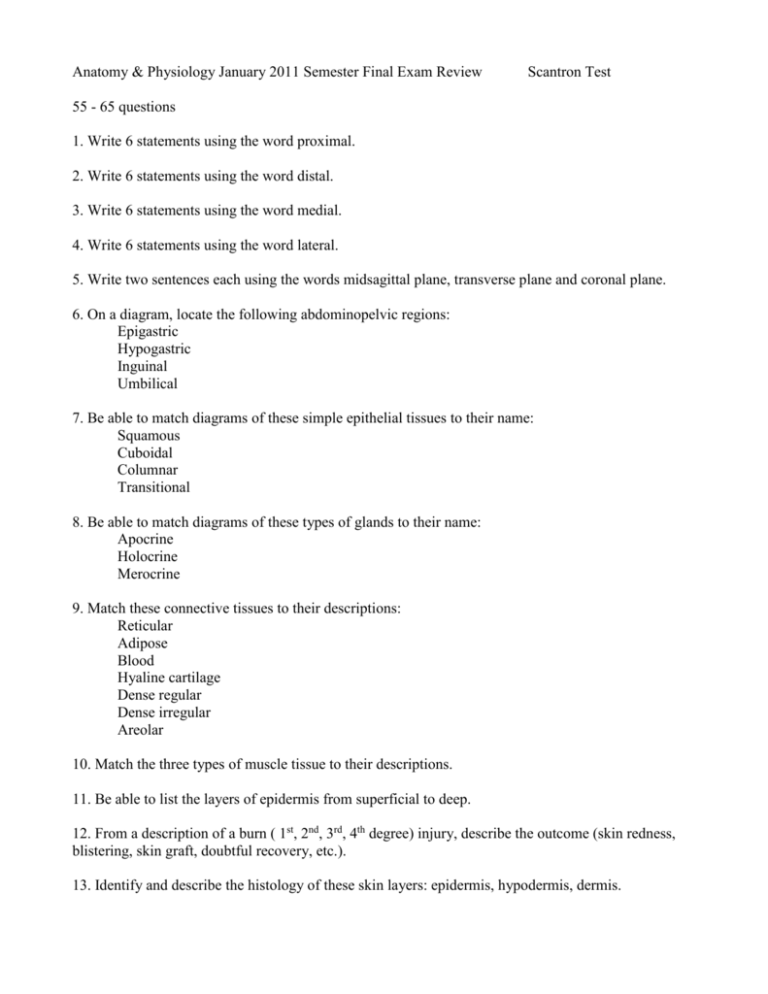
Anatomy & Physiology January 2011 Semester Final Exam Review Scantron Test 55 - 65 questions 1. Write 6 statements using the word proximal. 2. Write 6 statements using the word distal. 3. Write 6 statements using the word medial. 4. Write 6 statements using the word lateral. 5. Write two sentences each using the words midsagittal plane, transverse plane and coronal plane. 6. On a diagram, locate the following abdominopelvic regions: Epigastric Hypogastric Inguinal Umbilical 7. Be able to match diagrams of these simple epithelial tissues to their name: Squamous Cuboidal Columnar Transitional 8. Be able to match diagrams of these types of glands to their name: Apocrine Holocrine Merocrine 9. Match these connective tissues to their descriptions: Reticular Adipose Blood Hyaline cartilage Dense regular Dense irregular Areolar 10. Match the three types of muscle tissue to their descriptions. 11. Be able to list the layers of epidermis from superficial to deep. 12. From a description of a burn ( 1st, 2nd, 3rd, 4th degree) injury, describe the outcome (skin redness, blistering, skin graft, doubtful recovery, etc.). 13. Identify and describe the histology of these skin layers: epidermis, hypodermis, dermis. 14. From a description, be able to identify these types of fractures: greenstick break, comminuted fracture, compound fracture, and simple fracture. 15. In a longitudinal section of the end of a long bone, identify the epiphyseal line, medulary cavity, trabeculae. 16. Distinguish between periosteum and endosteum. 17. From a cross section of a skull, identify the frontal, parietal, temporal, occipital, sphenoid, ethmoid, maxillary and mandible bones. 18. Know how many bones an adult human has. 19. On a diagram, identify the humerus, radius, ulna, carpals and metacarpals. 20. On a diagram, identify the Pectorialis major, Brachialis, Pronator teres, Deltoid, Triceps brachii and Biceps brachii. 21. On a diagram, identify the Sartorius, Biceps femoris, Gracilis, Latissimus dorsi, Gluteus maximus and Gastrocnemius. 22. In a transmission electron micrograph of muscle, identify the Sarcomere, M line, A band, I band and Z disk. 23. In a diagram of actin and myosin, identify steps that cannot occur in rigor mortis. 24. In a diagram of skeletal muscle and bone, identify the periosteum, tendon, epimysium, endomysium, perimysium, muscle bundle, muscle fiber, myofibril, and muscle protein filaments. 25. Identify the roles of K+, Ca2+, Na+ and Mg2+ ions in muscle contraction. 26. Name all 12 cranial nerves in order, from anterior to posterior. 27. On a diagram of a reflex arc, be able to label the motor neuron, sensory neuron, effector action, and sensory receptor. On the spinal cord cross-section, label the white matter, gray matter, dorsal side of the spinal cord, dorsal root ganglion, and ventral side of the spinal cord. 28. On a diagram of the brain, be able to label: frontal lobe, occiputal lobe, parietal lobe, temporal lobe, ventricles, brain stem, hypothalamus, pons, medulla oblongata, thalamus, hypothalamus, cerebellum, and corpus callosum. 29. Match the lobes of the brain to its major functions.
